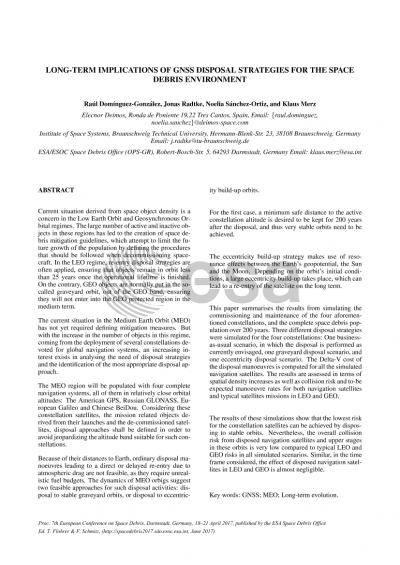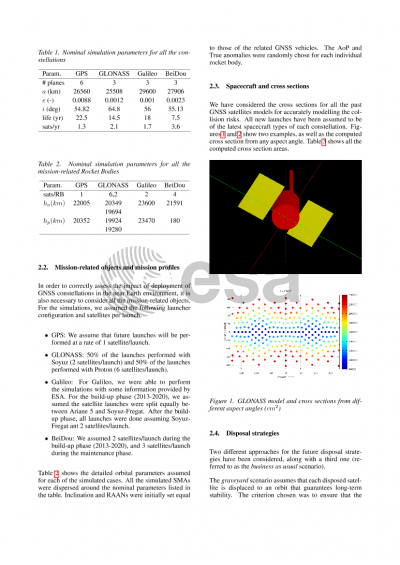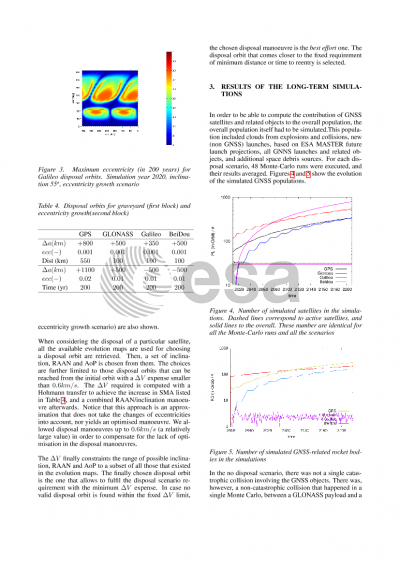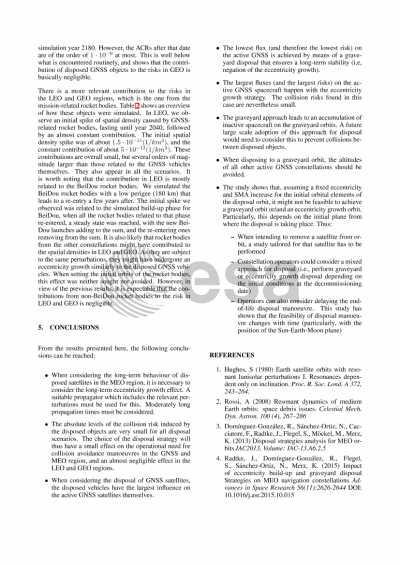Document details

Abstract
Current situation derived from space object density is a concern in the Low Earth Orbit and Geosynchronous Orbital regimes. The large number of active and inactive objects in these regions has led to the creation of space debris mitigation guidelines, which attempt to limit the future growth of the population by defining the procedures that should be followed when decommissioning spacecraft. In the LEO regime, re-entry disposal strategies are often applied, ensuring that objects remain in orbit less than 25 years once the operational lifetime is finished. On the contrary, GEO objects are normally put in the so-called graveyard orbit, out of the GEO band, ensuring they will not enter into the GEO protected region in the medium term.
The current situation in the Medium Earth Orbit (MEO) has not yet required defining mitigation measures. But with the increase in the number of objects in this regime, coming from the deployment of several constellations devoted for global navigation systems, an increasing interest exists in analysing the need of disposal strategies and the identification of the most appropriate disposal approach.
The MEO region will be populated with four complete navigation systems, all of them in relatively close orbital altitudes: The American GPS, Russian GLONASS, European Galileo and Chinese BeiDou. Considering these constellation satellites, the mission related objects derived from their launches and the de-commissioned satellites, disposal approaches shall be defined in order to avoid jeopardizing the altitude band suitable for such constellations.
Because of their distances to Earth, ordinary disposal manoeuvres leading to a direct or delayed re-entry
due to atmospheric drag are not feasible, as they require unrealistic fuel budgets. The dynamics of MEO orbigs suggest two feasible approaches for such disposal activities: disposal to stable graveyard orbits, or disposal to eccentricity build-up orbits.
For the first case, a minimum safe distance to the active constellation altitude is desired to be kept for 200 years after the disposal, and thus very stable orbits need to be achieved.
The eccentricity build-up strategy makes use of resonance effects between the Earth’s geopotential, the Sun and the Moon. Depending on the orbit’s initial conditions, a large eccentricity build-up takes place, which can lead to a re-entry of the satellite on the long term.
This paper summarises the results from simulating the commissioning and maintenance of the four aforementioned constellations, and the complete space debris population over 200 years. Three different disposal strategies were simulated for the four constellations: One business-as-usual scenario, in which the disposal is performed as currently envisaged, one graveyard disposal scenario, and one eccentricity disposal scenario. The Delta-V cost of the disposal manoeuvres is computed for all the simulated navigation satellites. The results are assessed in terms of spatial density increases as well as collision risk and to-be expected manoeuvre rates for both navigation satellites and typical satellites missions in LEO and GEO.
The results of these simulations show that the lowest risk for the constellation satellites can be achieved by disposing to stable orbits. Nevertheless, the overall collision risk from disposed navigation satellites and upper stages in these orbits is very low compared to typical LEO and GEO risks in all simulated scenarios. Similar, in the time frame considered, the effect of disposed navigation satellites in LEO and GEO is almost negligible.
Preview











